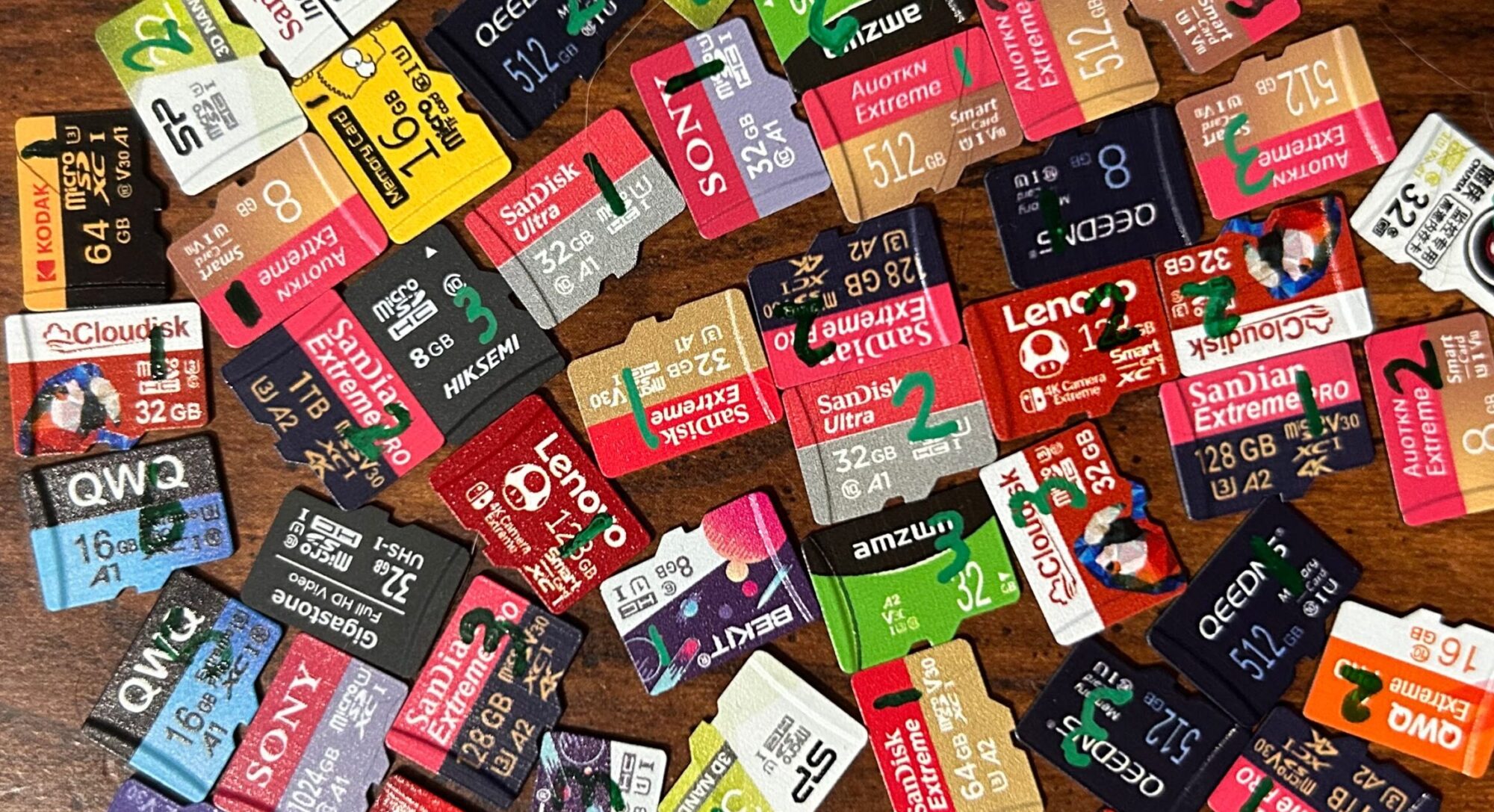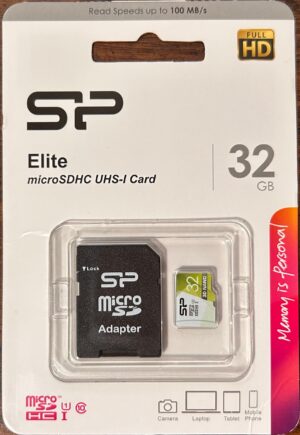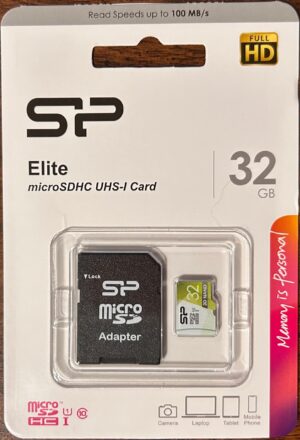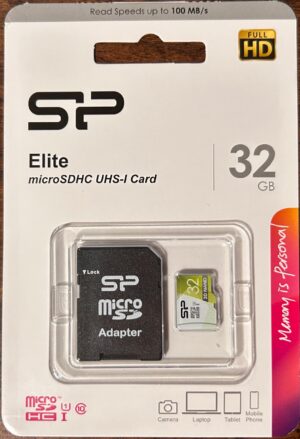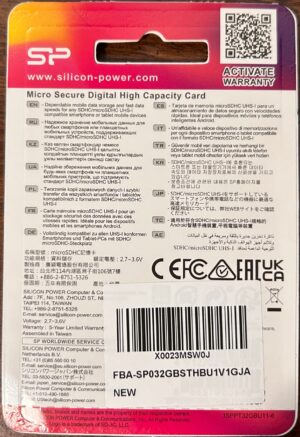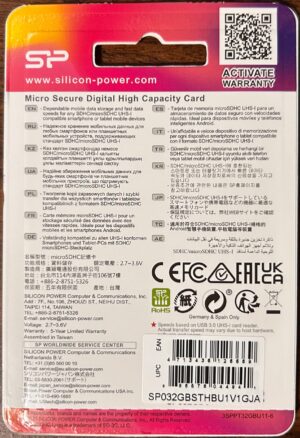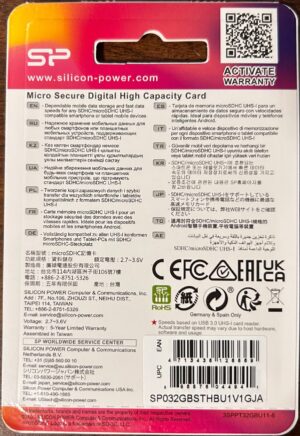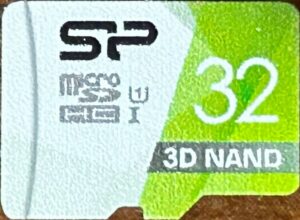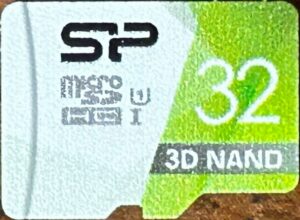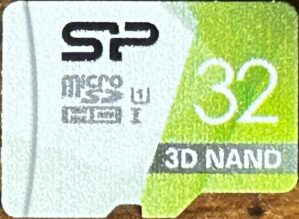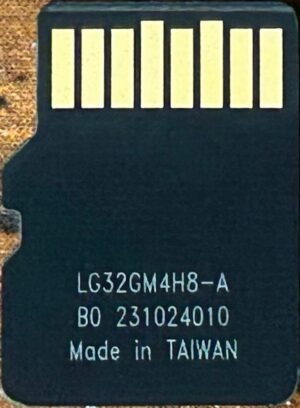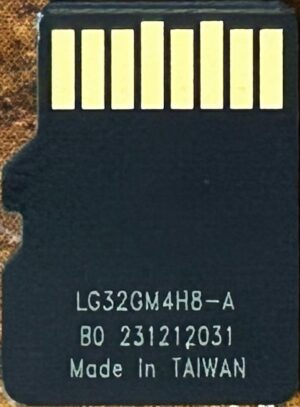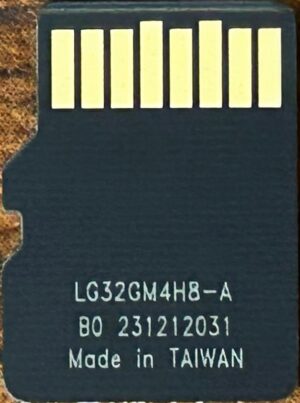- Obtained from: Amazon
- Advertised capacity: 32GB
- Logical capacity: 31,096,569,856 bytes
- Physical capacity: 31,096,569,856 bytes
- Fake/skimpy flash: Skimpy (2.82% skimp)
- Protected area: 83,886,080 bytes
- Adjusted skimp: 2.56%
- Speed class markings: Class 10, U1
- CID data:
- Manufacturer ID:
0x9f - OEM ID:
0x5449(ASCII:TI) - Product name:
0x5350434320(ASCII:SPCC) - Product revision:
0x12
- Manufacturer ID:
Discussion
3D NAND is a newer flash memory technology where transistors are built up in layers, allowing for greater memory density. In fact, Branch Education did an excellent video on SSDs where they went into how 3D NAND technology works and how it’s produced. Since it’s a newer technology, I wanted to see how it compares to traditional (2D) NAND. This was the first one I found that advertised itself as 3D NAND and was within my budget. Admittedly I’m not very familiar with Silicon Power, but they’re a member of the SD Card Association, so I’ll lump these cards in with the “Name Brand” category.
You might notice the difference in price, as well as the fact that two of them have CID data indicating that they were manufactured in 2009. What I purchased was a single card and a two-pack, as the two-pack was only a few dollars more than the single card. Of course, what Amazon sent me was just two single cards (each in its own packaging) together in an envelope. I believe the two that have their manufacture date set to 2009 were from this pack, but I didn’t keep track of which ones came from the two-pack, so I can’t be 100% sure. Why do they have their manufacture date set to 2009? No clue. But I’m pretty sure the chances that they were actually manufactured in 2009 are next to nil.
Performance on these cards was a little disappointing. Sequential read speeds were above average, but all other metrics were below average. All measurements came in within one standard deviation of average. Is this a factor of the fact that this is a 3D NAND card? No clue — I might have to test some of SP’s other (2D NAND) models to figure that out.
The results of the endurance tests for these cards was also disappointing. All three of them failed in the same way: they simply stopped responding to commands, even though they had been doing quite well in the endurance tests up until that point. None of them made it to the 2,000 read/write cycle mark; sample #3 didn’t even make it to the 1,000 read/write cycle mark before failing.
I dunno — this doesn’t inspire confidence in 3D NAND technology. However, so far they’re my only cards that use 3D NAND. (I guess I don’t know for certain that they use 3D NAND; they could have simply said they were 3D NAND and actually made with 2D NAND.) They’re also the only Silicon Power cards I’ve tested so far — so maybe I need to get some other Silicon Power cards and see if they have the same issue. But so far neither of these inspire me.
November 4, 2024
